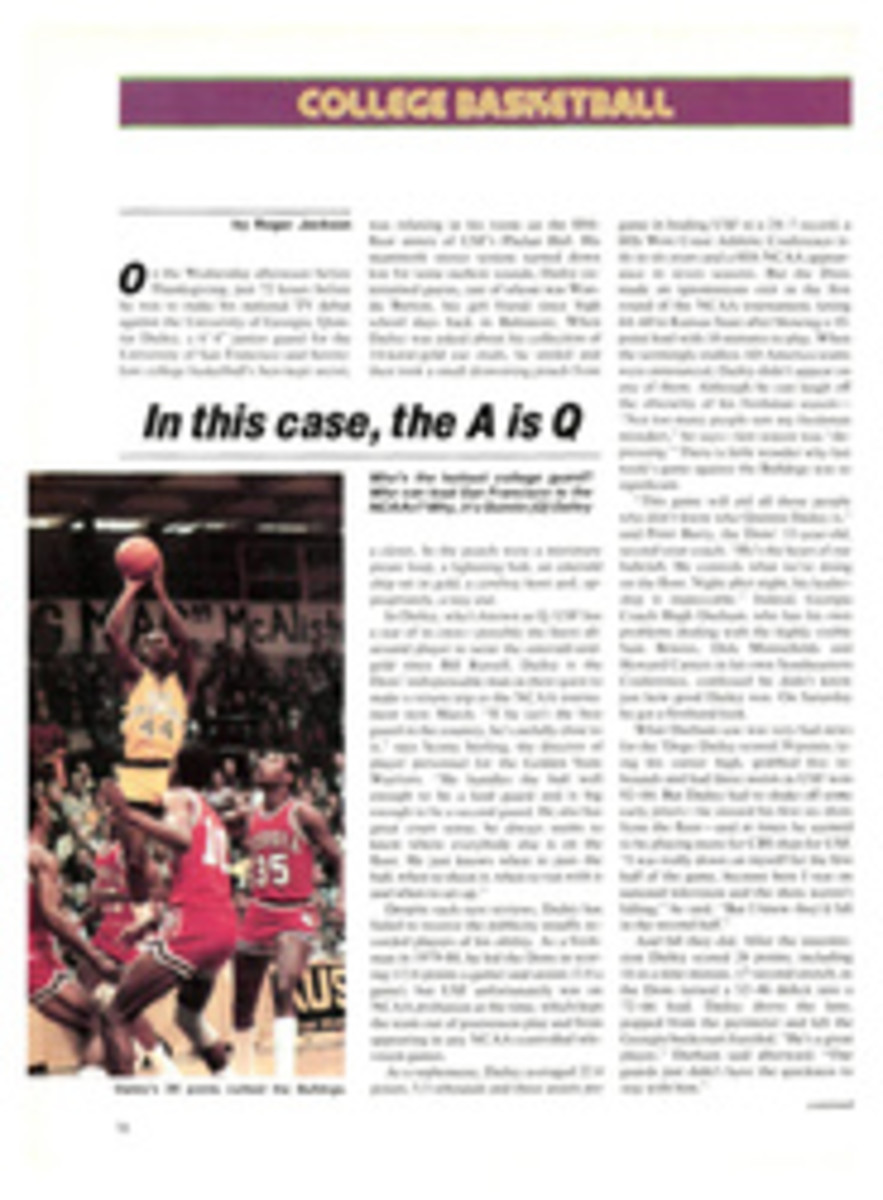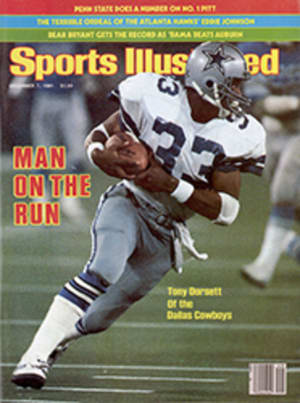
EVERYTHING YOU WILL EVER WANT TO KNOW ABOUT THE BLAZERS—AND MORE
There is a manner of writing, employed by the best reporters when they go book-length, which implies that the writer knows at least as much about his subject as God does, and maybe a little more—perhaps because God knows when to avert His gaze. They don't surmise, they know. In The Best and the Brightest, David Halberstam told us everything we ever wanted to know about how we messed up in Vietnam. In The Powers That Be, Halberstam did the same for The Washington Post, Los Angeles Times, CBS and Time Inc. Now, in The Breaks of the Game (Alfred A. Knopf, $15), he applies his reportorial skills to professional basketball with equally comprehensive effect.
There is a limit to the amount of information I can absorb at one sitting, and Halberstam continually tests it in this book, as he did in the earlier ones. This isn't a knock, but homage from someone who gave up reporting at an early age because he was reluctant to ask anything more penetrating than "How do you think the team will do this week, Coach?"
Halberstam made his reputation in the early '60s as the young New York Times reporter who actually went out into the country in Vietnam when other reporters stayed in Saigon. And he is not afraid to ask much tougher questions than most NBA reporters. And obviously people answer him. I am impressed both by his knowledge and by his ability to impart it. Basketball has never been my favorite sport, and I guess it never will be, but I now have a deeper understanding of the game and a far greater appreciation of the problems, both physical and mental, of the men who play it.
Basketball was conceived by Dr. Naismith as a non-contact sport, but it hasn't turned out that way. Players are forever getting bumped and knocked down and hurt. And because today's players can jump to remarkable heights, the sport puts tremendous strain on their feet and knees. It's disturbing to learn how often the resulting ailments are eased with Butazolidin, the drug that got Dancer's Image disqualified after he had won the 1968 Kentucky Derby.
A disproportionate share of the players' mental distress has to do with money. I would have thought it unlikely that I could feel much compassion for young men making the kind of money I normally associate only with Saudi princes and the Rolling Stones, and it's a tribute to Halberstam that he is able to make me do so. The average pro basketball player, it appears, is a running, jumping, dunking package of neuroses. And money, while a specific for this condition, is also at the core of what ails him. Big money is especially troubling. The fringe player is happy just to be there, making a meager 50 or 60 thou a year. But the $300,000-a-year star on a long-term contract is embittered because some player he considers less useful is making $400,000. The money, while appreciated for the usual reasons, is almost more important as a measure of success—a tangible way of keeping score in the game most people play.
They play it much harder in the tall trade, says Halberstam, because, while we may think of our sports stars as heroes, "the new American athlete, particularly the modern American professional basketball player...was rarely confident about anything save his own sport...he was more often than not black, often came from pathetic economic and psychological circumstances, was a basketball player out of desperation.... He remained as aware of where he had started as where he had ended, and how easily he might return."
The framework on which The Breaks of the Game is constructed is a single season (1979-80) in the history of the Portland Trail Blazers, who were in transition after having won the league championship only three years before. But there is much more here and not just about the Trail Blazers. With flashbacks and side trips, the book becomes a history of that franchise, with emphasis on Bill Walton and the championship year (1976-77), and, too, almost a history of modern (i.e., predominantly black) professional basketball.
Here you will meet such varied and complex personalities as Marvin Barnes, who some experts say is one of the best natural talents ever to come into the NBA and who destroyed his career with drugs and passionate insouciance—"the last innocent," Walton called him; Kermit Washington, who fled from a posh Hollywood party because the movie people were sniffing cocaine; Abdul Qadir Jeelani (born Gary Cole), a shy young man who liked Rome better than Portland but yearned for the kind of recognition you cannot find as "the king of spaghetti basketball"; Maurice Lucas, educated, intelligent, married to a Harvard graduate, yet tormented by the belief that his $300,000 salary was somehow demeaning.
And there's the great Walton himself—born with feet so bad that doctors marveled at his ever becoming an athlete at all, obsessed with winning even in a team scrimmage or a picnic soccer game. During the '77 playoffs he worried that Philadelphia might be eliminated, denying him the opportunity to test himself in the championship series against Julius Erving, George McGinnis and Darryl Dawkins.
Why did Halberstam pick Portland as the subject of his book? Possibly because it has an interesting coach, Jack Ramsay, whom Halberstam clearly admires, and an owner, Larry Weinberg, who is not typical of the species: He has a social conscience and shuns publicity. And I was much taken with Stu Inman, the player personnel director, who loves teams with colorful nicknames and delights in scouting the Maine Lumberjacks, the Hawaiian Volcanoes or the Anchorage Northern Knights. He is therefore especially charmed by the fact that Ramsay once played in the car pool, semi-pro Eastern League for a team called the Sunbury Mercuries. Inman also loves professional basketball so much that he doesn't want to coach it—not, one gathers, because he might fail, but for fear that it might sour him on the game.
Billy Ray Bates. Wayne Embry. David Twardzik. The subtleties of the game. Apparently it is as fraught with nuance as a Pinter play—which is why good teams often get worse after acquiring a superstar. There are many intriguing people and there is much good stuff in The Breaks of the Game. If you're a sports fan, it's a good bet you'll enjoy this book even if you have been lukewarm about the sport. If you're a basketball nut, it's my guess you'll still learn a few things from it. And even if you're not a fan, you'll enjoy Halberstam's reportage.

